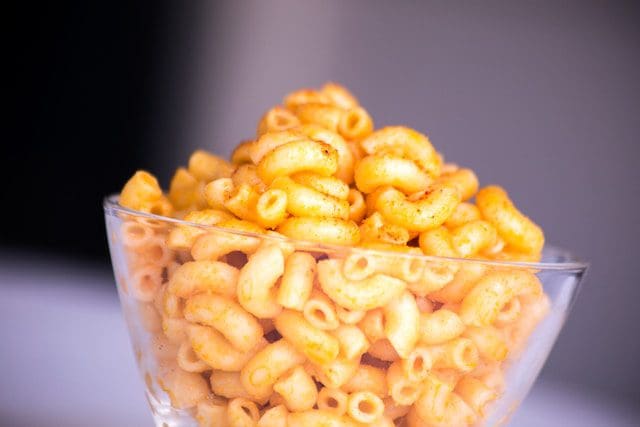Do certain foods have an irresistibly delicious taste that keeps you asking for more? Have you ever wondered why some food items are incredibly tempting and addictive while others quickly become boring or unappealing? While there is undoubtedly a lot of debate about which types of food provide the most enjoyable flavors and textures, the science behind our palate suggests that the answer might be more profound than many realize.
In this article, we’ll look at how our sense of taste works and explore how different factors can make certain kinds of food more desirable than others. Stay tuned to discover why some food items can easily capture your attention – and keep it.
Table of Contents
Exploring the Neurochemistry of Taste – How Our Brains React to Different Flavors
The neurochemistry of taste is a fascinating area of study that delves into how our brain responds to different flavors. Every time we eat or drink something, a complex interaction occurs between our taste buds and the brain, including a series of chemical and electrical signals. These signals trigger various reactions and associations within our brains, shaping our perception and interpretation of flavors.
Several studies have shown how our brains respond to taste can be influenced by various factors, including genetics, age, and culture. By understanding the neurochemistry of taste, we can gain a deeper insight into the complex and intricate workings of the human brain, shedding light on how we experience and enjoy food.
Understanding Food Cravings – Exploring the Role of Diet, Hormones, and Stress
Do you ever want certain foods despite being full or not feeling particularly hungry? Many things, such as hormones, stress levels, and diet, can influence food cravings. However, it’s important to note that food cravings are also linked to our emotions and psychological state. Studies have shown that solid food cravings can indicate an underlying emotional need or craving for comfort.
For instance, if you’re feeling overwhelmed or stressed out, you might find yourself drawn to a comforting bowl of chili or a slice of freshly-baked banana nut bread recipe. Eating these food items can help us feel better by giving us a sense of satisfaction and pleasure – which explains why some food items can be irresistibly addictive.
The Science Behind Comfort Foods – Why Some Foods Bring a Sense of Well-Being
Comfort foods can provide us with emotional comfort and well-being, helping improve our mood and reduce stress. Research suggests that this effect is due to the release of endorphins in the brain, which are hormones that act as natural painkillers and create feelings of pleasure.
For example, when you eat a bowl of macaroni and cheese or a slice of warm apple pie, your brain releases endorphins that help calm anxious or negative emotions. It is why some food items have such an incredibly addictive quality – they provide physical and emotional satisfaction.

Uncovering Addictive Eating Habits – What Causes People to Eat Too Much or Too Little?
Addictive eating habits are patterns of behavior where people eat too much or too little. Unhealthy eating habits can be caused by various factors, such as genetics, hormones, environmental influences, and even psychological issues.
Sometimes, the individual may not be aware that their eating habits are unhealthy or problematic until they start to experience physical or psychological effects. It’s important to remember that while unhealthy eating habits can lead to serious health problems, they can break the cycle with the right help and support.
Evaluating Nutrient Profile of Addictive Foods – Examine Macronutrients and Micronutrients
What makes certain foods so addictive? Much concerns the nutrient profile, including macronutrients such as proteins, carbohydrates, and fats, and micronutrients such as vitamins, minerals, and antioxidants.
Evaluating the nutrient content of any food items you are consuming is essential, as this can help you identify any potential nutritional deficiencies or excesses. Furthermore, some foods may contain harmful substances such as trans-fats or added sugars, which should be avoided whenever possible. By understanding the nutrient profile of addictive foods, you can better understand how they affect your body and make healthier choices when selecting snacks or meals.
Ways to Break Free from Food Addiction – Strategies for Overcoming Unhealthy Eating Patterns
The first step to breaking free from food addiction is understanding that it is a real problem, not just an occasional indulgence. It’s important to recognize when you are engaging in unhealthy eating habits and then work towards changing them.
Several strategies can help with this, such as avoiding triggers or cues that make you want to eat unhealthily; planning nutritious meals ahead of time; eating slowly and savoring your food; and keeping a healthy snack on hand for times when cravings strike. You should also seek professional help if needed, as many resources are available to support those who struggle with addictive eating patterns.
Healthy Eating Habits – Making Nutrition Part of Your Daily Routine
Healthy eating habits go beyond just avoiding unhealthy foods and controlling portion sizes. Ensuring a balanced diet with adequate amounts of essential vitamins and minerals is essential to maintain optimal health.
It can be done by following a food pyramid or other dietary guidelines, including lean protein sources, complex carbohydrates, healthy fats, and plenty of fresh daily fruits and vegetables. Finally, staying hydrated is essential for overall well-being, so drink plenty of water throughout the day! Incorporating these tips into your daily routine can create an environment where healthy eating habits become second nature.
Featured Image by Finn Bjurvoll Hansen from Pixabay




